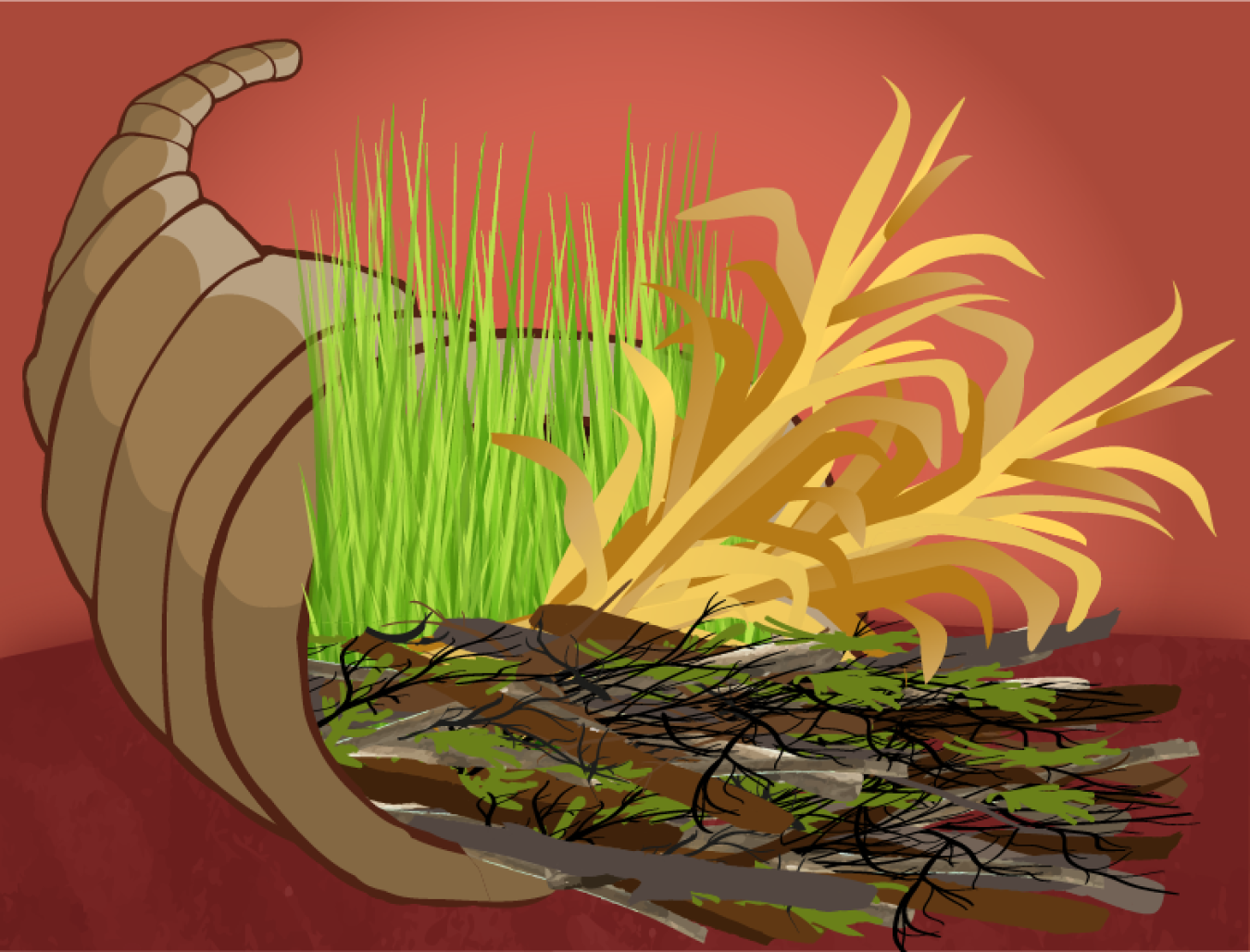
Forestry residues, switchgrass, and corn stalks are all examples of non-food biomass that can be used to make biofuels and bioproducts.
Switchgrass, algae, forest trimmings, corn husks and corn stalks—you can’t eat these crops, and you would never put them on your table for Thanksgiving; however, together they make up a bountiful harvest of non-edible biomass. These crops can be used to produce biofuels and bioproducts, which can create more economic opportunities, increase energy independence, and reduce greenhouse gas emissions.
Right now, biofuels and consumer products made from biomass are not commercially widespread. However, the Energy Department’s Bioenergy Technologies Office (BETO) is funding research and development to help lower their costs so that private industry can produce and sell them on the commercial market.
The United States has a tremendous amount of these biomass resources. According to the recently released 2016 Billion-Ton Report, we could produce 1 billion tons of biomass for bioenergy by 2030 while still having sufficient land to meet our food, feed, and fiber needs. That’s enough to fill the Dallas Cowboys’ stadium nearly 1,600 times!
Here’s a closer look at our cornucopia of non-food, biomass feedstock options:
Corn Husks and Stalks
Also called “corn stover” and agricultural residues—corn husks, stalks, and leaves are a great source of biofuel. They provide an opportunity for farmers to make more money by selling the corn stover from their existing corn crops. Although some corn stover must be left on the ground after a corn harvest for healthy soil regeneration, the rest of it is waste. BETO has funded the development of technologies to harvest corn stover more efficiently and sustainably, and to develop cost-efficient corn stover conversion processes such as those used by DuPont’s biorefinery in Nevada, Iowa.
Forestry Residues
Forestry residues are another valuable waste resource. Biofuel can be made from wood wastes from the logging industry, pulp and paper industry, and landfills. Removing some trees from forests—called “forest thinning”—is already an important part of healthy forest management. Producing biofuel from forestry residues provides many opportunities for bioenergy and for healthy forest regrowth. In fact, the first cellulosic ethanol made from wood was sold in 2014.
Switchgrass and Miscanthus
Certain crops can be planted specifically for biofuel production without negatively affecting other crops and agriculture. Switchgrass and miscanthus are two tall, fast-growing grasses that can thrive in places many crops cannot, making them beneficial to soil health. Some other energy crops include small, fast-growing trees such as poplar and loblolly pine. The 2016 Billion-Ton Report assessed that energy crops are an important part of the United States’ 1 billion tons of biomass potential.
Algae
Besides crops, microorganisms like algae can contribute to our future fuel mix. Algae can produce high levels of oils and other products, and biofuel producers can grow them in large cultivation ponds and convert them into biofuel. Scientists are working on ways to lower the cost of algal biofuel by increasing algae production and developing innovations for algae cultivation and harvesting.
Wet Wastes
Biofuel can also be produced from the wastes of water treatment plants, including food waste, animal manure, and sewage sludge. Wet waste is a newer effort in BETO’s portfolio. Pacific Northwest National Laboratory recently developed a process that can convert sewage to biocrude oil in less than 60 minutes.
Together, the Bioenergy Technologies Office, national laboratories, universities, and private companies are hard at work developing sustainable, cost-competitive biofuels from these many feedstocks. In fact, some commercial airlines are already running on biofuel blends! With this many biomass resources to develop, there is a lot to be thankful for this Thanksgiving.

